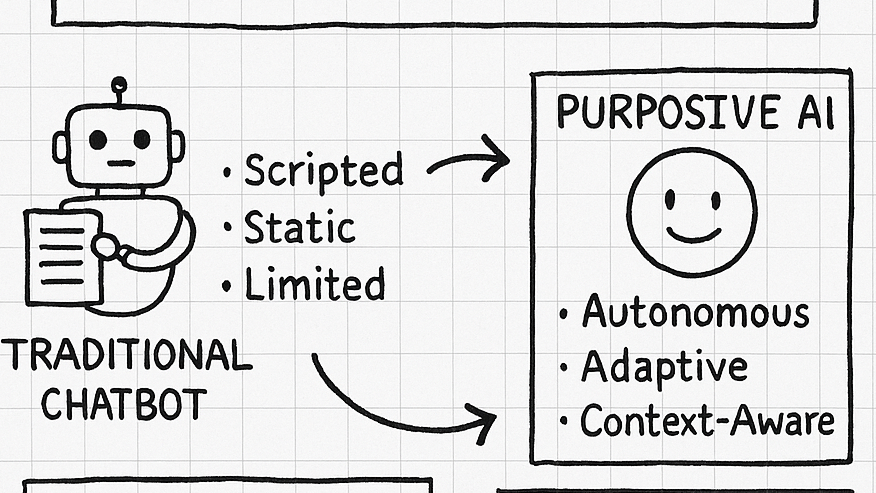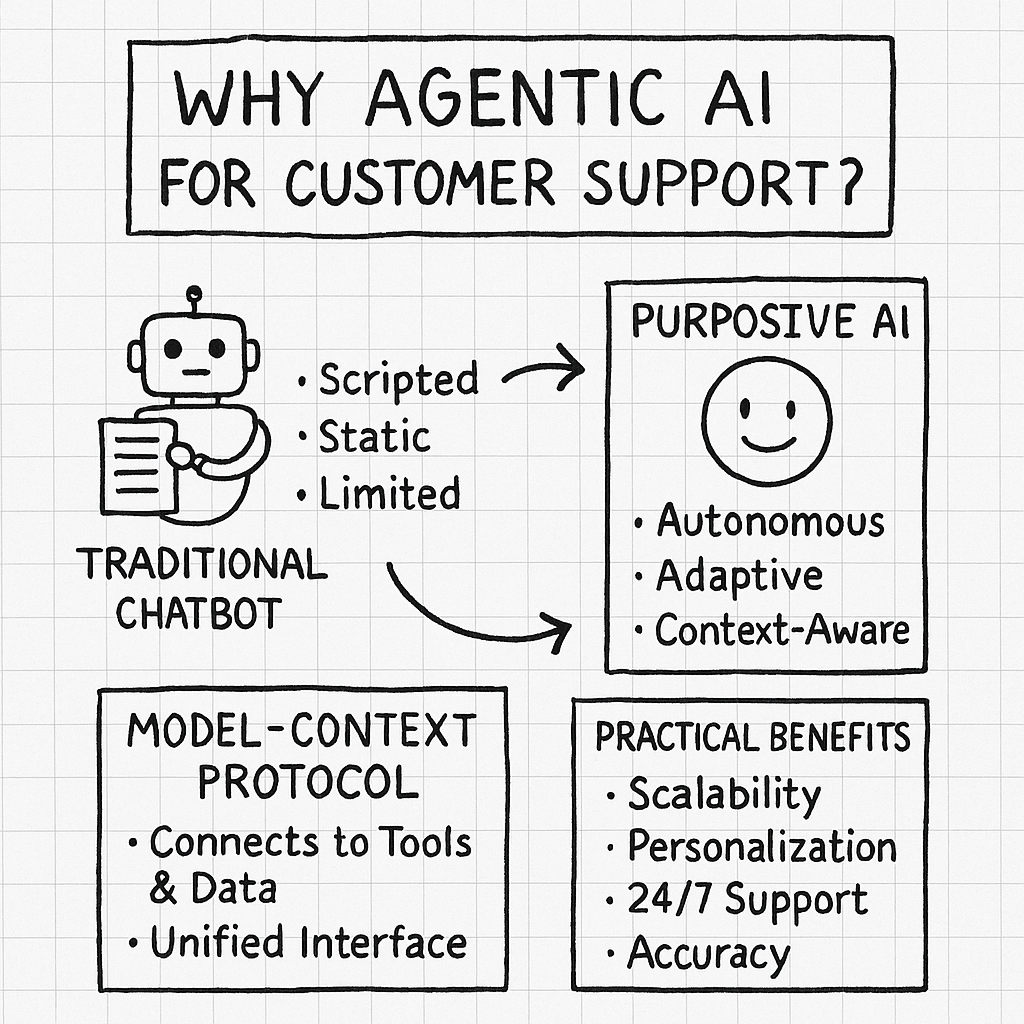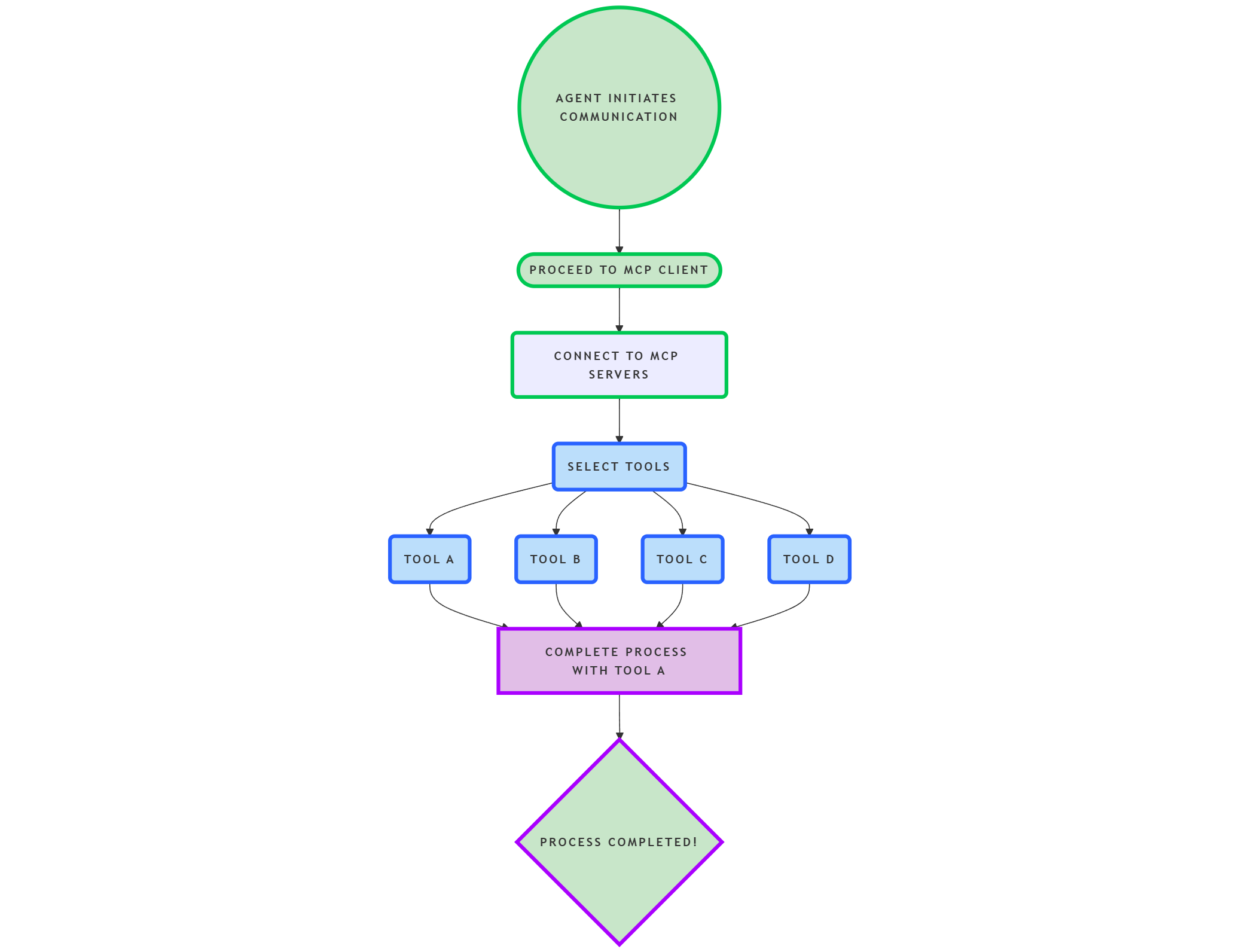I'm trying to build customer support with Agentic AI!

I'm Trying to Build Customer Support with Agentic AI

Let me tell you about something that's been keeping me up at night (in a good way). I've been diving deep into building customer support systems with agentic AI, and honestly? It's been a wild ride.
You know how traditional chatbots make you want to throw your phone across the room? Those "press 1 for this, press 2 for that" experiences that somehow always end with "please hold while I transfer you to a human"? Yeah, I'm trying to fix that.
What Actually Makes Agentic AI Special?
Here's the thing that blew my mind when I first encountered agentic AI: these aren't your typical chatbots following rigid flowcharts. They're more like having that one really smart colleague who just gets things done.
Traditional bots are like following a recipe step-by-step. Agentic AI? It's more like a chef who improvises based on what's in the fridge. Here's what I mean:
- They think ahead - Instead of waiting for you to ask 47 follow-up questions, they anticipate what you actually need
- They take action - Want to cancel an order AND update your address? Done. No "let me transfer you to billing" nonsense
- They stay in the loop - They remember your conversation from last week and pick up right where you left off
- They're always learning - Every interaction makes them smarter about your specific business
I had a customer recently ask: "I bought the wrong size shirt last week, can you help me out?" A regular bot would panic. My agentic system? It pulled up their order history, identified the purchase, offered an exchange, found their size preference from previous orders, and even suggested expedited shipping since they mentioned needing it for an event. All in one conversation.
The Magic Behind the Scenes: MCP

Okay, let me geek out for a second about Model-Context Protocol (MCP). I like to think of it as the universal translator that lets my AI actually do stuff instead of just talk about doing stuff.
Before MCP, connecting AI to real systems was like trying to plug a USB-A into a USB-C port with 47 different adapters. Now? It's like magic.
Here's how it works (and why I'm obsessed with it):
- Customer asks for something complex
- My AI agent thinks: "I need to check their order status, inventory levels, and maybe schedule a callback"
- MCP translates that into specific API calls to our order system, warehouse, and calendar
- Everything comes back structured and ready to use
- Customer gets a complete answer in seconds
The beautiful part? When we add a new tool or service, I don't need to rebuild the entire system. I just add a new MCP connector and boom — the AI can use it immediately.
Why This Actually Matters for My Dev Team
I'll be honest: I was skeptical at first. Another AI buzzword? But here's what changed my mind:
Speed of development - Last month, we needed to integrate with a new shipping API. With traditional systems, that's a week-long project. With MCP? Two hours.
Real-time everything - Customers get answers based on what's actually happening right now, not cached data from last Tuesday.
It actually solves problems - Instead of routing tickets to humans, it handles complex multi-step requests autonomously. My support team can focus on the cases that genuinely need human touch.
Future-proofing - As we add more tools and services, the system gets smarter, not more complicated.
The Stuff That Actually Works
I'm not going to oversell this - there are still moments when I want to debug with a hammer. But when it works (which is most of the time now), it's incredible:
- Customers ask about orders using natural language, and the system finds exactly what they mean
- Complex requests like "cancel my subscription but keep my discount for when I come back" get handled end-to-end
- The AI discovers and uses new tools without me having to manually map every possible workflow
- Most importantly: customers actually get help instead of getting transferred around in circles
The Technical Reality Check
Let me get real for a second about the implementation challenges, because Twitter makes this stuff look easier than it actually is.
The Learning Curve is Steep First few weeks? I broke more things than I fixed. Agentic AI doesn't just plug into your existing systems like a WordPress plugin. You need to rethink how your data flows, how your APIs are structured, and honestly, how your entire support process works.
Data Quality Matters More Than Ever Your AI is only as good as the data it can access. I spent weeks cleaning up our customer database because - surprise - having three different fields for "customer notes" across different systems doesn't play well with AI agents.
The Integration Dance Each tool integration feels like negotiating a peace treaty. Every CRM, ticketing system, and payment processor has its own API quirks. Some days I feel more like a diplomatic translator than a developer.
What I Wish I Knew Before Starting
Start Small, Think Big Don't try to replace your entire support team on day one. I started with simple order lookups and gradually expanded. Your AI agent needs to earn trust, one successful interaction at a time.
Train Your Team First Your support team will be working alongside these agents, not being replaced by them. Make sure they understand what the AI can and can't do. I learned this the hard way when agents were escalating cases the AI could easily handle.
Monitor Like Your Life Depends On It Set up dashboards for everything. Response accuracy, escalation rates, customer satisfaction per interaction type. The data tells you where your AI is crushing it and where it's... less crushing.
Have Fallback Plans for Everything When your AI agent decides 3 AM is the perfect time to start hallucinating order numbers, you better have human backup ready. I've got more monitoring alerts than a NASA mission control.
The Unexpected Wins
Here's what caught me off guard in the best way:
Customer Education Happens Naturally The AI doesn't just solve problems - it explains how things work. Customers are learning about features they didn't know existed, just through natural conversations.
Internal Tool Discovery My support team started finding and using tools they'd forgotten about because the AI would suggest them during complex cases. It's like having a really good new hire who actually read all the documentation.
Data Insights on Steroids Every interaction generates structured data about what customers actually want. I'm seeing patterns in support requests that were invisible before.
Where We're Headed
Look, I'm not saying agentic AI will replace all human support (please don't send me angry emails, support managers). But for the routine stuff that eats up 80% of tickets? It's a game-changer.
I'm building this because I've been on both sides - as a frustrated customer and as a developer trying to scale support without losing quality. Agentic AI with MCP feels like the first solution that actually gets both sides right.
The technology is here, it's working, and honestly? If you're still building traditional chatbots, you're already behind.
The Real Talk
Building agentic AI for customer support isn't just about the cool tech (though that part is fun). It's about fundamentally changing how we think about helping people. Every frustrated customer who gets their issue resolved in one conversation instead of five is a win.
Every support agent who can focus on complex, interesting problems instead of password resets is a win.
Every developer who doesn't have to manually code integrations for every new tool is a win.
This stuff is hard, sometimes frustrating, but absolutely worth it. And honestly? We're just getting started.
Want to chat about implementation? I'm always down to talk shop about making customer support actually helpful again.
Building this stuff is hard, but someone's got to do it. Might as well be us.
Loading Advertisement...
*Ads help keep this website running. Please consider disabling your ad blocker to support us.*